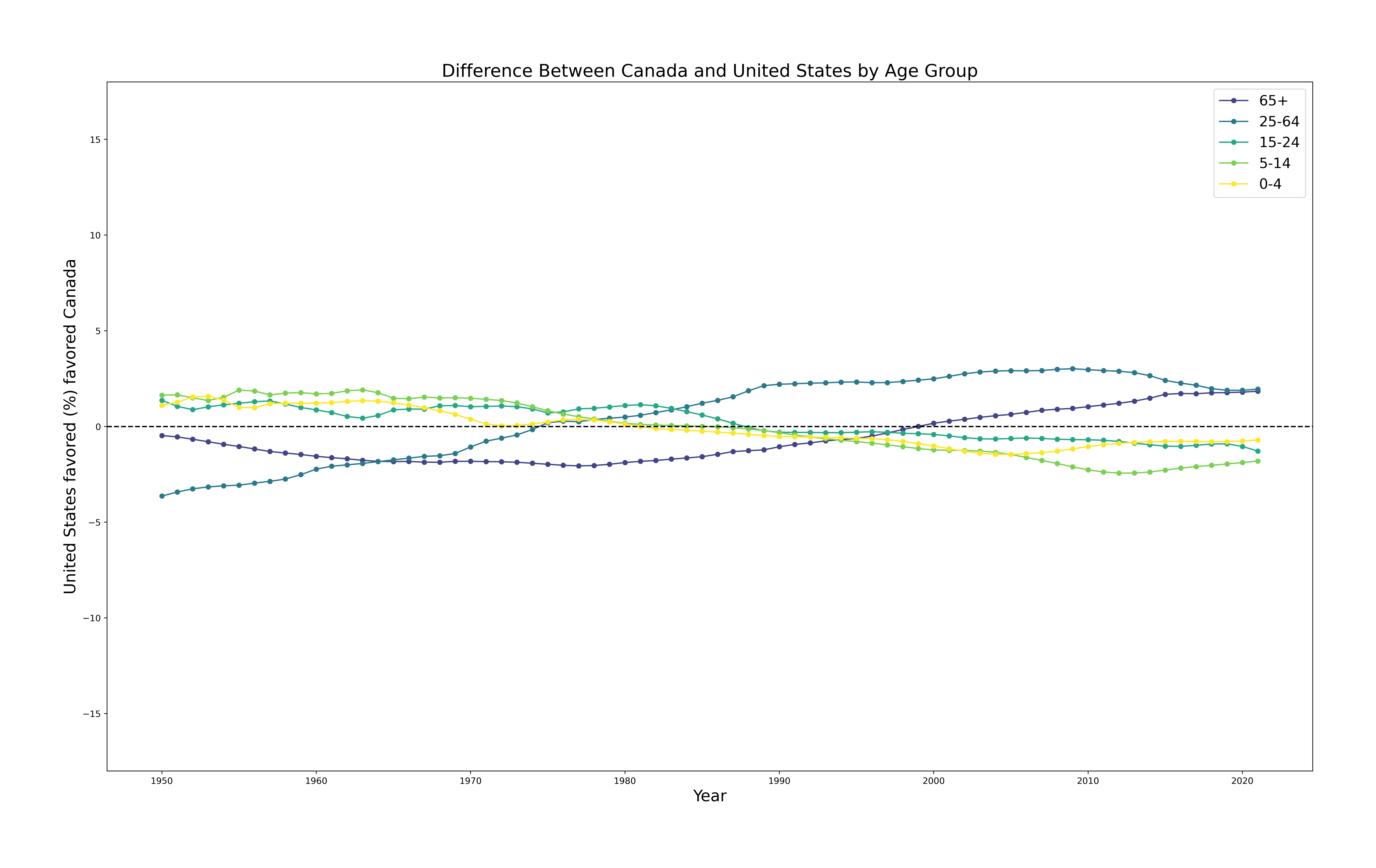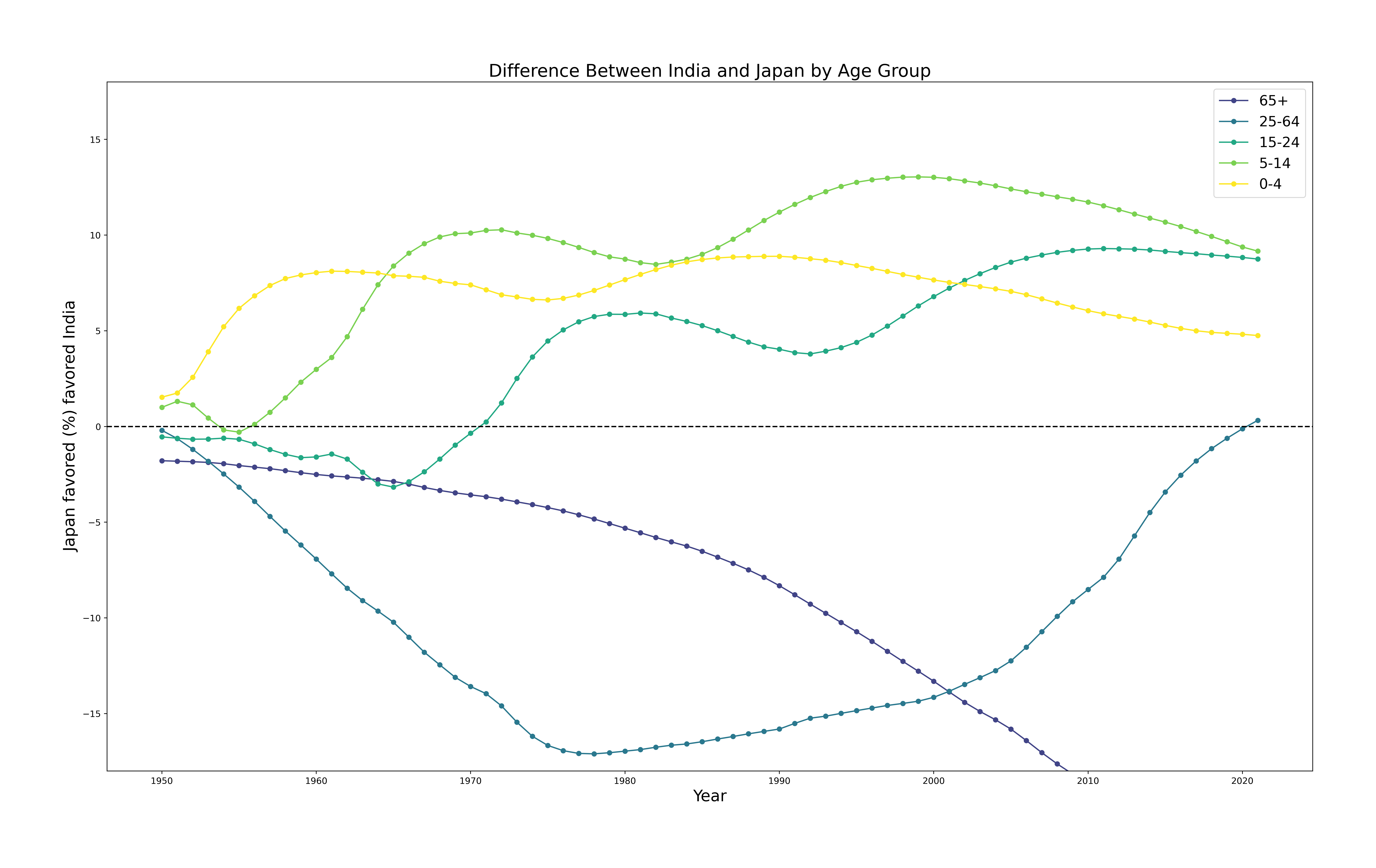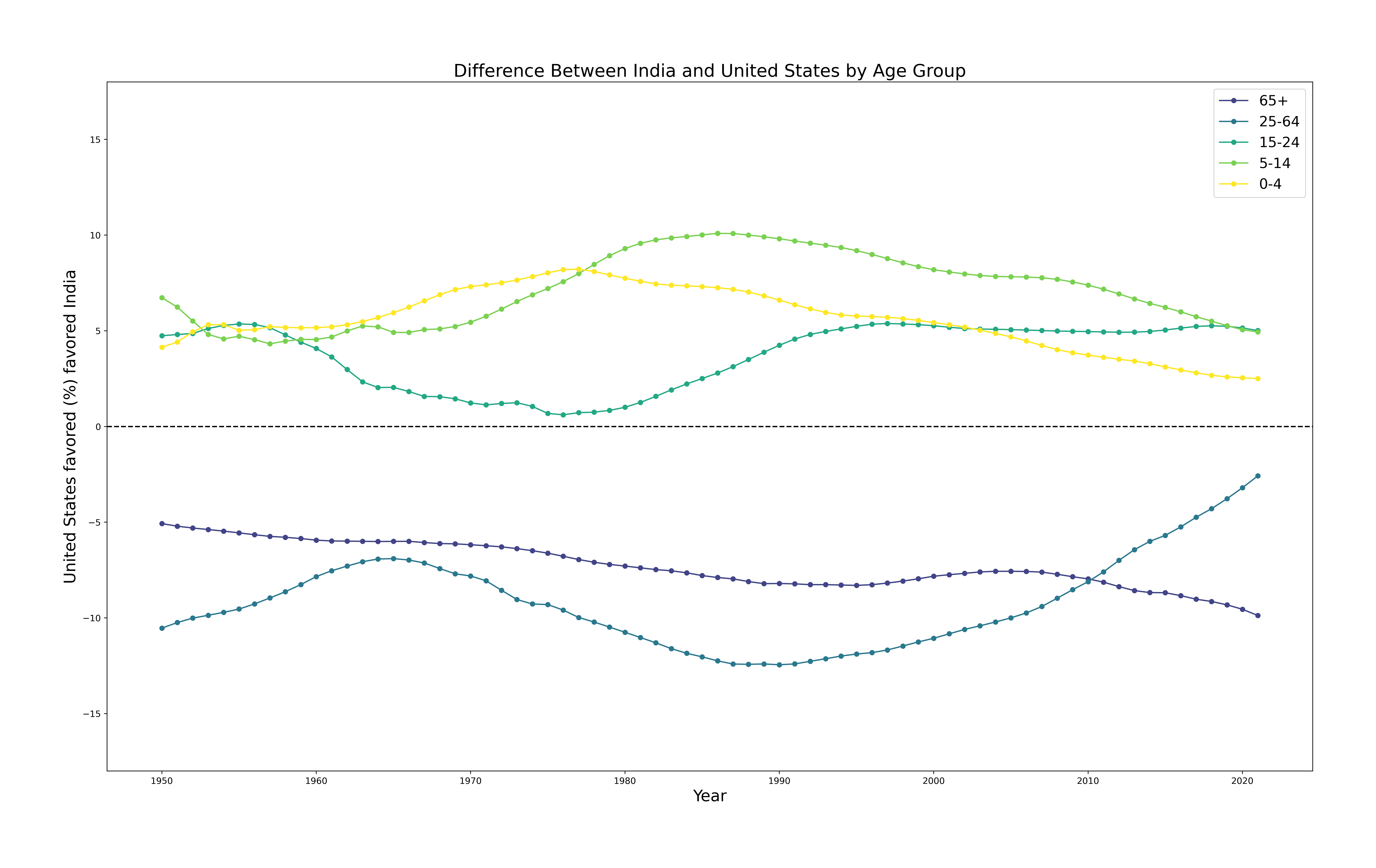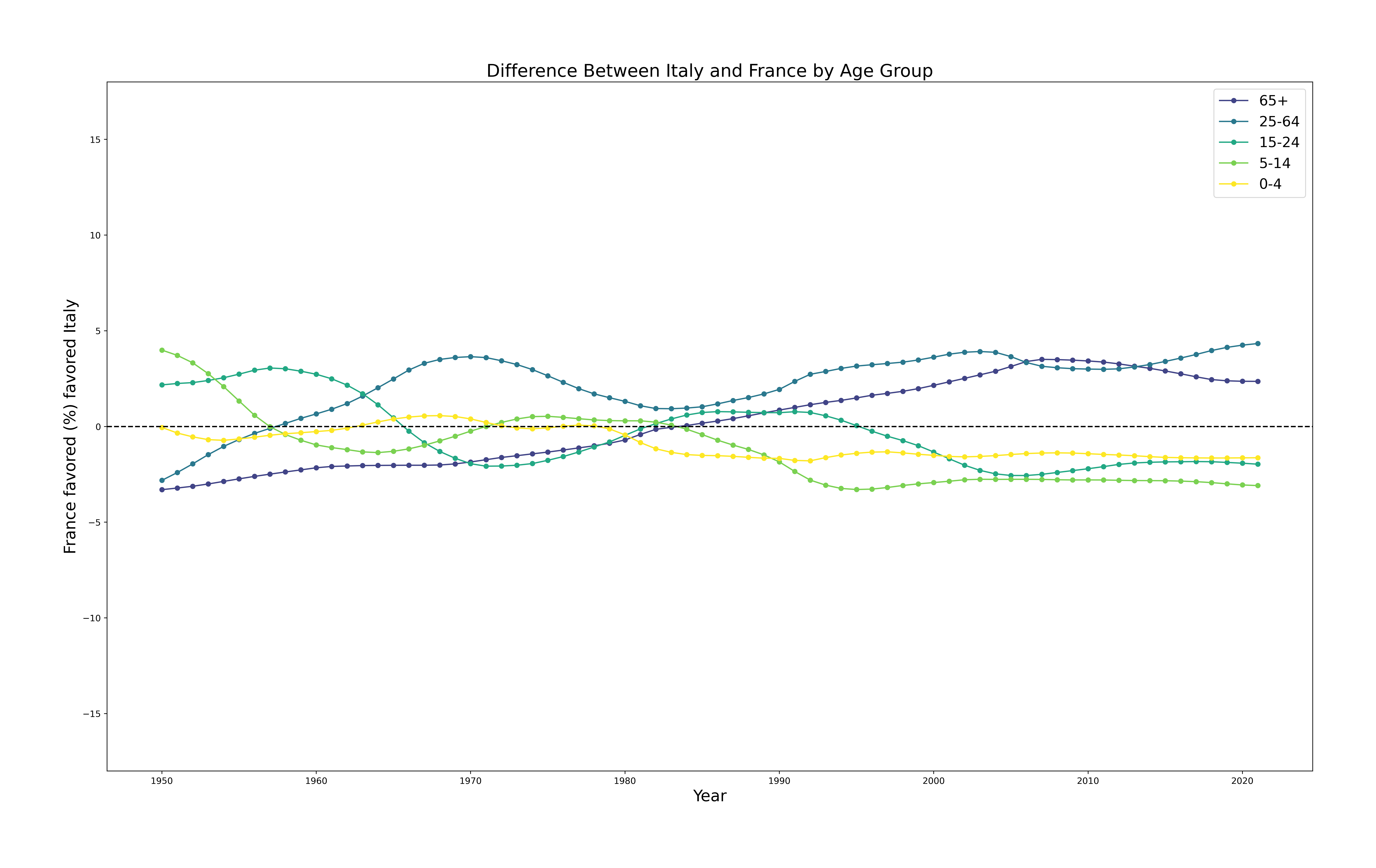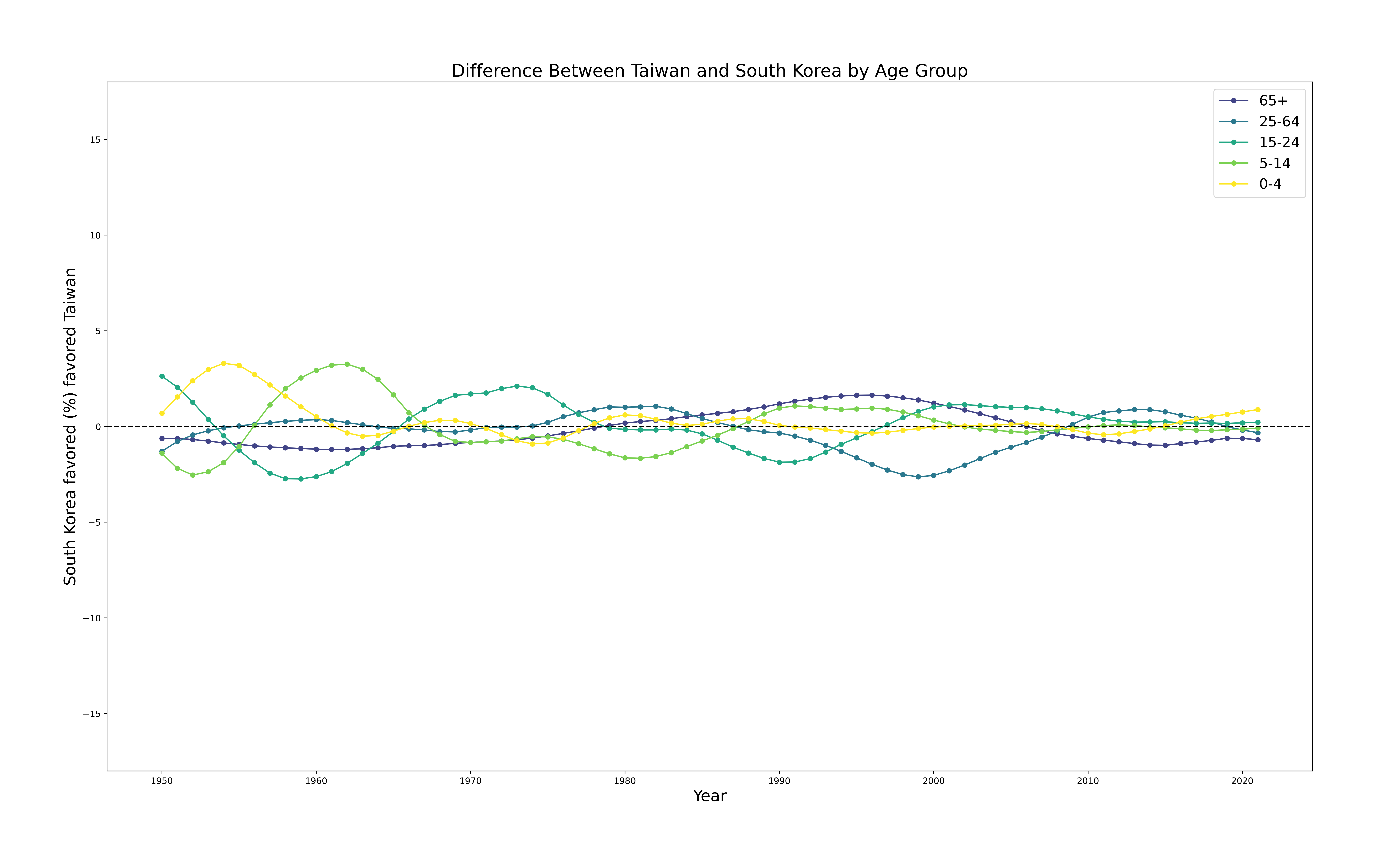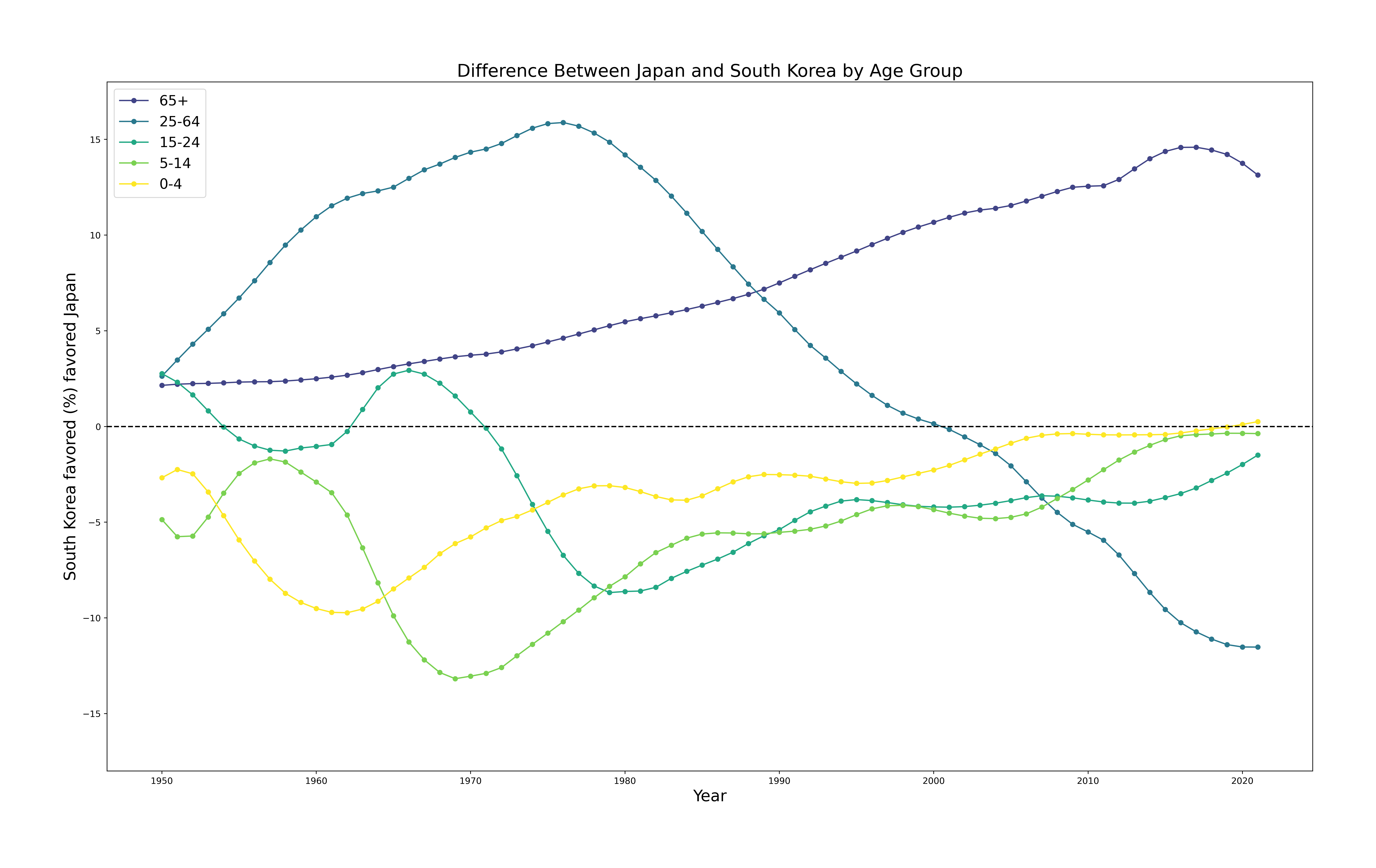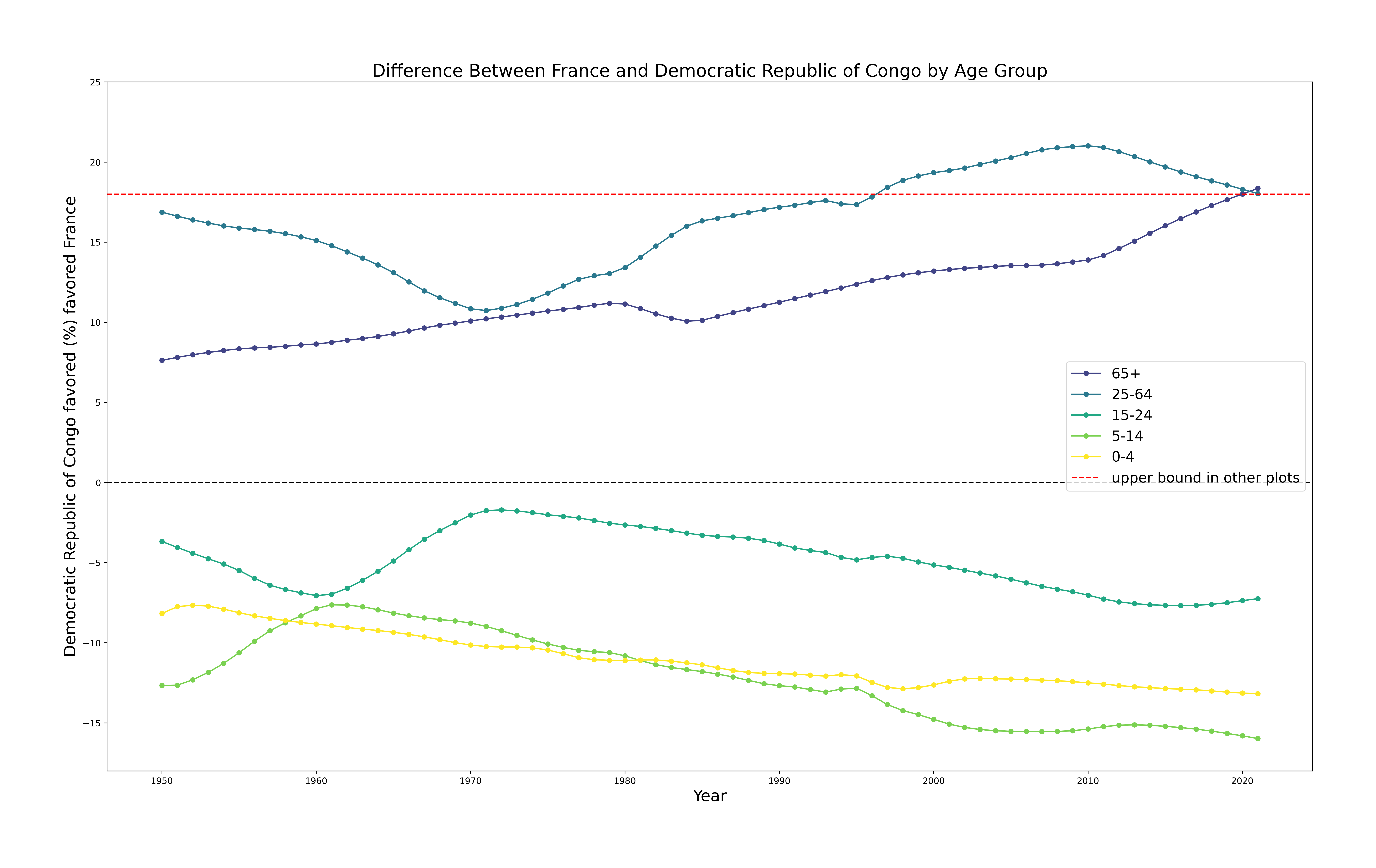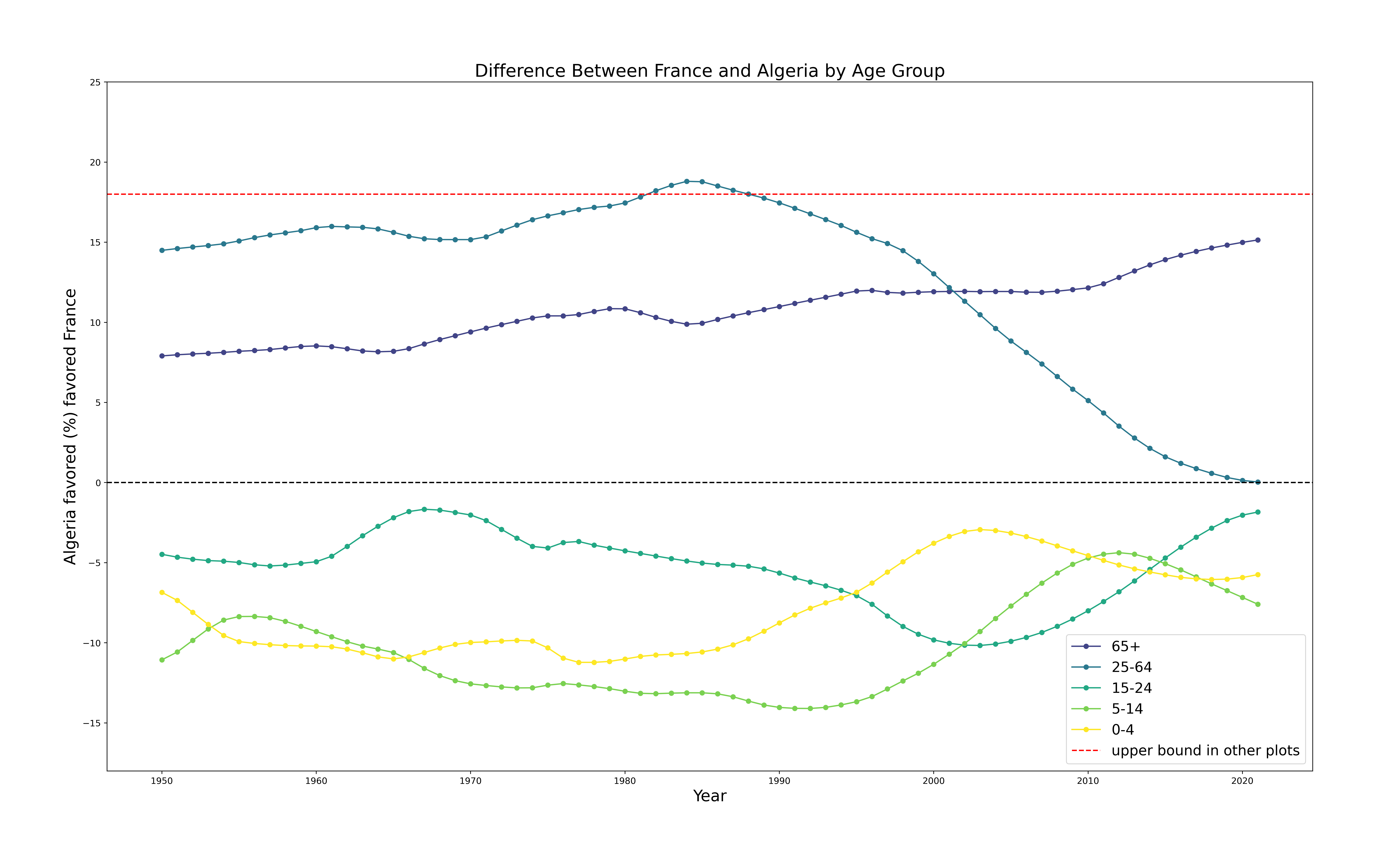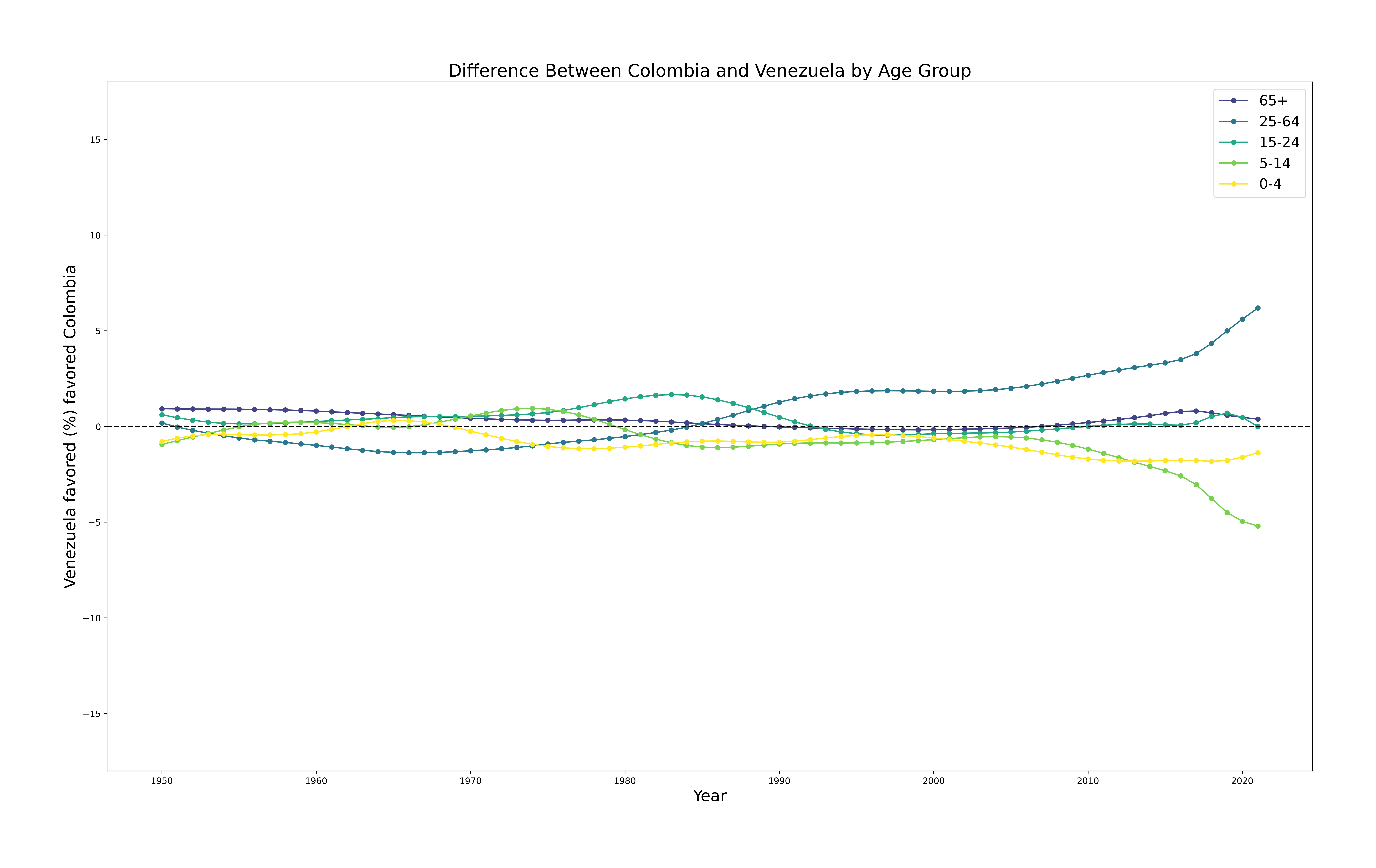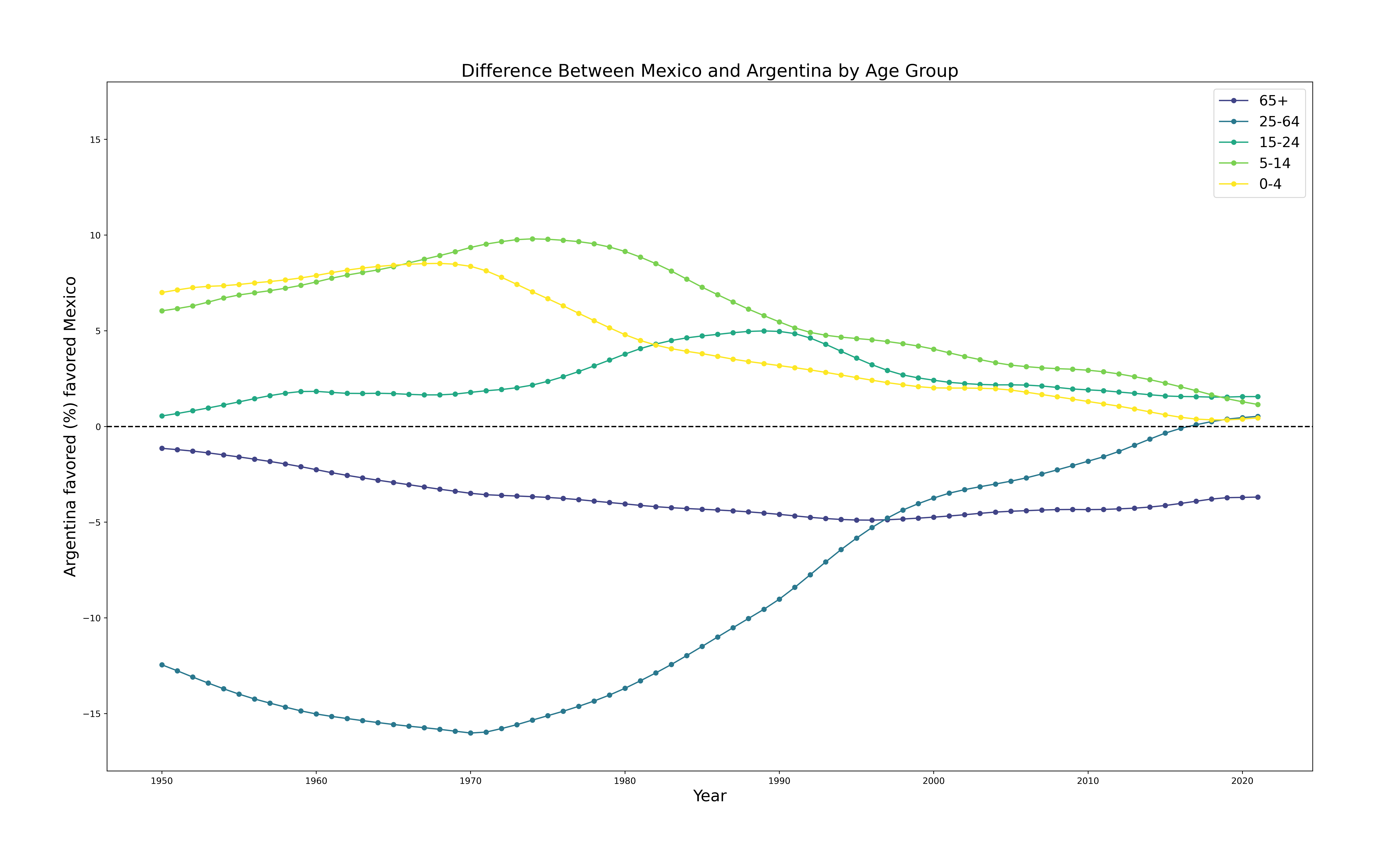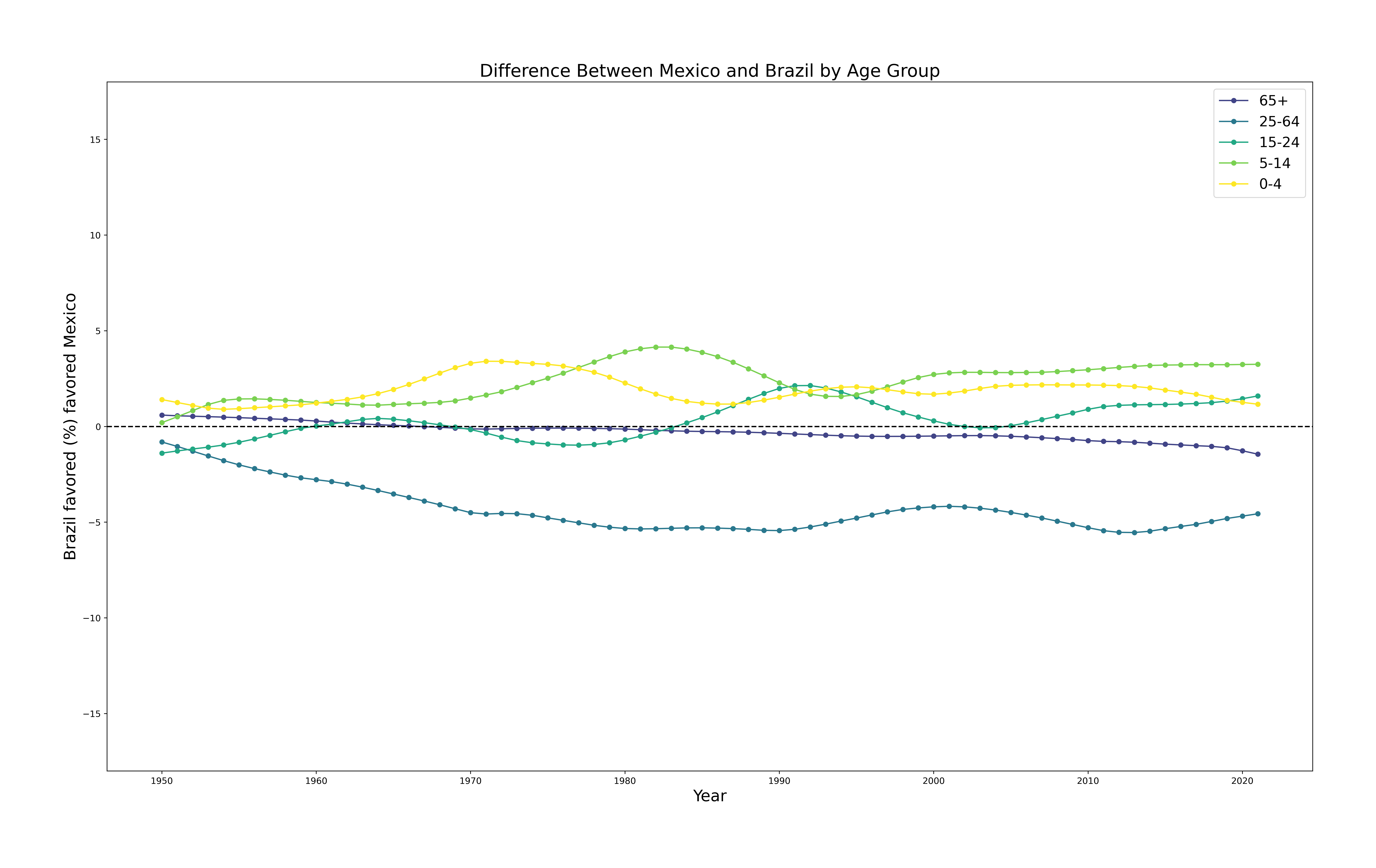Anotherpage
Click here to go back. Click here to bring you to a collab notebook to play with this data yourself.
To get a handle on how demographics compare, we can take the percent of the population that falls in a particular age range; for example, 15% of a population might be 65+ - call this the age fraction. To compare the demographic structure of two countries, we can take the difference of their age fractions, for each age range, and plot this over time. If their age structure is exactly the same, then the difference of their age fractions will all be zero. So the greater the age fraction difference across age fractions, the greater the difference in their age structure. As we will see, differences within 0-5% are pretty similar.
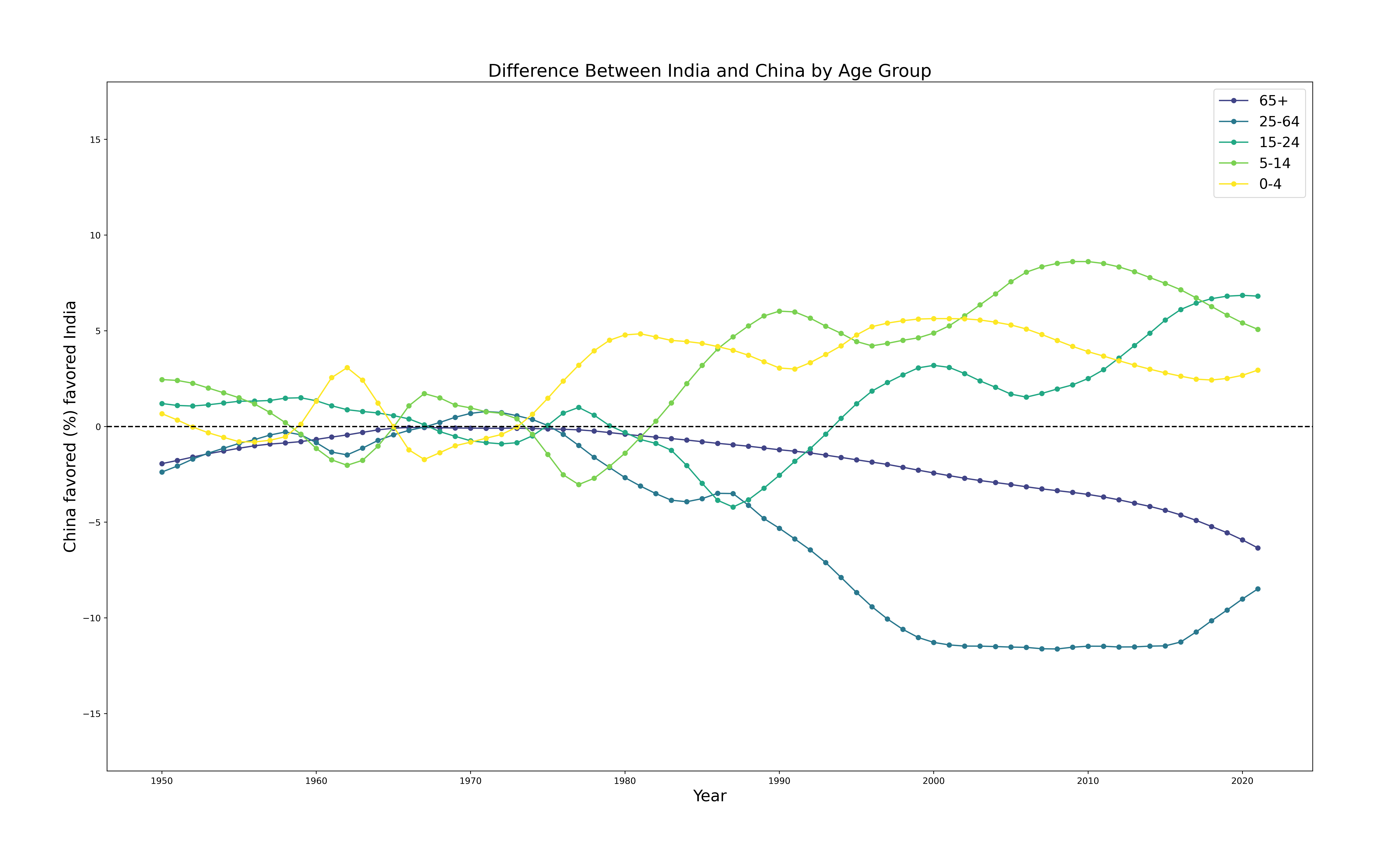
Notice that China’s and India’s demographics are very similar until about 1980. Thus, mortality variations between the two in the first thirty years are not a fluke of age structure (for example, if one country’s population was simply much older overall, it would be more likely to have higher mortality rates as a result). Further, changes after 1980 are a result of trends apparent starting in the mid-1970s. We are seeing the social consequences then, of different political economies, start to manifest.
Something comparable happened in South Korea vs other Third World countries, such as Tanzania:
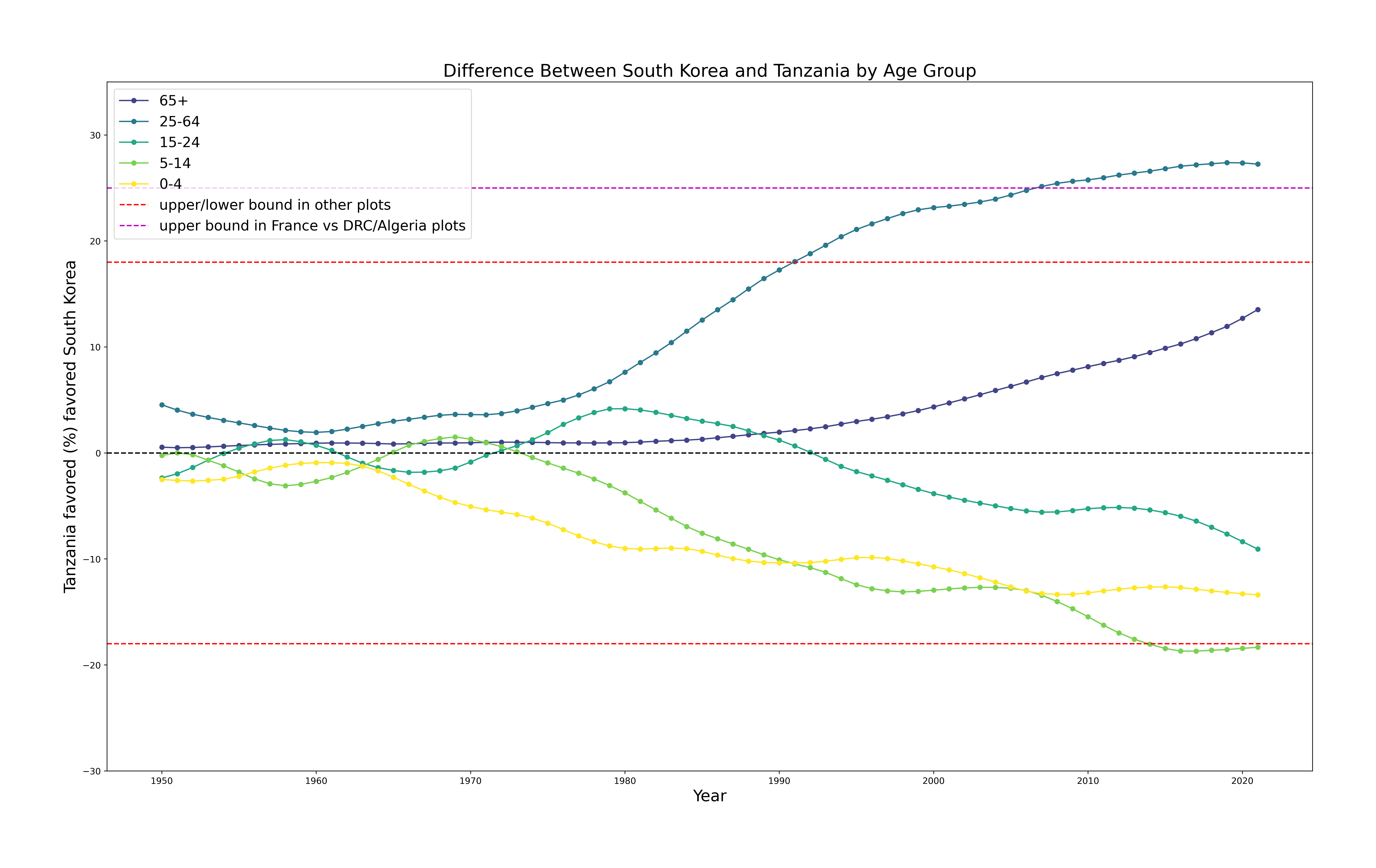
There are many reasons South Korea (and Taiwan) are not great "models" for other countries. The primary reason is their special relationship with the USA as anti-communist citadels, being on the frontline with "Red China" (and North Korea). To innoculate against Communist threats, the USA encouraged land reform (whereas it opposed this elsewhere). To strengthen them, along with Japan, the USA provided a powerful military umbrella (reducing their military expenditure), and opened up favorable trade relations with these countries (by, for example, reducing import duties from these countries), which made an "export-oriented industrialization" possible. What makes China so interesting - besides its enormous population size - is that it was able to achieve very similar quality of life factors largely independently.
As a reference, here are some other country comparisons:
